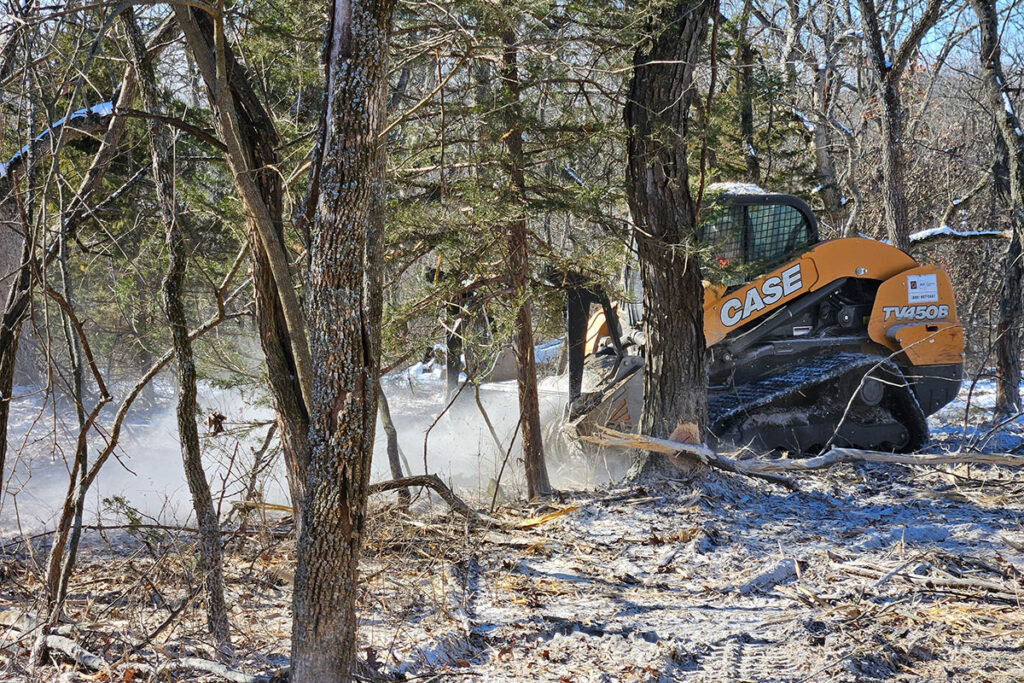In the realm of land management and conservation, the practice of forestry mulching has emerged as a powerful tool for clearing underbrush while preserving soil integrity and ecosystem health. Unlike traditional methods that involve heavy machinery or manual labor, forestry mulching employs specialized equipment to grind vegetation into nutrient-rich mulch, offering a host of benefits for both the environment and landowners. Let’s delve into the advantages of utilizing forestry mulching as a sustainable approach to underbrush removal.
Soil Conservation and Enhancement: Forestry mulching offers a gentle yet effective means of clearing underbrush without causing soil disturbance or erosion. Unlike bulldozers or excavators, which can compact soil and disrupt delicate root systems, mulching equipment grinds vegetation in place, leaving behind a layer of organic mulch that helps retain moisture, prevent erosion, and promote soil health. This mulch acts as a natural blanket, protecting the soil from the erosive forces of wind and water while gradually decomposing to enrich the soil with organic matter and nutrients.
Biodiversity Preservation: By selectively removing underbrush rather than clear-cutting entire areas, forestry mulching allows for the preservation of biodiversity and habitat complexity. This targeted approach maintains crucial microhabitats for various plant and animal species, fostering a diverse ecological community. Unlike conventional clearing methods that may disrupt nesting sites, foraging grounds, and wildlife corridors, forestry mulching minimizes habitat fragmentation and supports the continuity of ecological processes, ensuring the long-term viability of ecosystems.
Fuel Load Reduction and Fire Risk Mitigation: In fire-prone regions, reducing the accumulation of dry, flammable vegetation is essential for wildfire prevention and safety. Forestry mulching offers a proactive solution by efficiently processing underbrush into fine mulch, which decomposes more rapidly than intact vegetation. By decreasing the fuel load on the forest floor, mulching helps mitigate the intensity and spread of wildfires, creating defensible space around properties and critical infrastructure. This strategic vegetation management approach enhances fire resilience and protects both human communities and natural landscapes.
Cost-Effective Land Management: From forest restoration projects to land development initiatives, forestry mulching offers a cost-effective alternative to traditional land clearing methods. By combining vegetation removal and mulch application in a single pass, mulching equipment streamlines the process and minimizes the need for additional site preparation or cleanup. This efficiency translates into reduced labor costs, shorter project timelines, and enhanced overall productivity. Moreover, the organic mulch produced during the mulching process can be recycled on-site or utilized for erosion control, further maximizing resource utilization and minimizing waste.
Ecologically Sustainable Solution: Forestry mulching aligns with principles of ecological sustainability by prioritizing resource conservation and ecosystem integrity. Unlike chemical herbicides or mechanical clearing methods that may have adverse environmental impacts, mulching equipment operates with minimal disruption to the natural landscape. By preserving soil structure, supporting biodiversity, and mitigating fire risk, forestry mulching promotes a harmonious relationship between human activities and the environment, ensuring the long-term health and resilience of terrestrial ecosystems.
Forestry mulching represents a paradigm shift in underbrush removal, offering a holistic approach that balances ecological stewardship with practical land management objectives. By harnessing the benefits of mulching technology, landowners and conservationists can achieve multiple goals simultaneously, from soil conservation and biodiversity preservation to wildfire mitigation and cost-effective land management. As we navigate the complexities of land use and conservation, forestry mulching stands out as a versatile and sustainable solution for promoting healthy landscapes and thriving ecosystems. Let us embrace this innovative approach as we strive to build a more resilient and harmonious relationship with the natural world.

